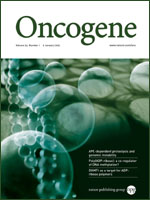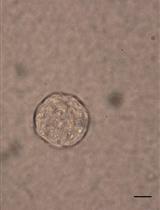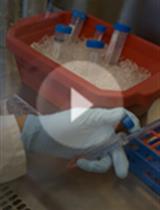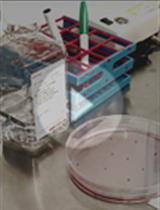- EN - English
- CN - 中文
In vitro Human Umbilical Vein Endothelial Cells (HUVEC) Tube-formation Assay
人脐静脉血管内皮细胞(HUVEC)体外成管实验
发布: 2012年09月20日第2卷第18期 DOI: 10.21769/BioProtoc.260 浏览次数: 70082
Abstract
Angiogenesis is involved not only in pathological conditions including cancer biology and non-neoplastic diseases, but also many biological processes including reproduction, development and repair. During angiogenesis, endothelial cells (ECs) undergo activation after binding of angiogenic factors to their receptors, release of proteases to dissolve the basement membrane, migration towards an angiogenic signal, proliferation, and an increase in cell number for new blood vessel formation. Finally, reorganization of ECs forms the three-dimensional vasculature. HUVEC tube-formation assay is one of the simple, but well-established in vitro angiogenesis assays based on the ability of ECs to form three-dimensional capillary-like tubular structures, when cultured on a gel of growth factor-reduced basement membrane extracts. During the assay, ECs differentiate, directionally migrate to align, branch, and form the tubular polygonal networks of blood vessels.
Keywords: HUVEC (人脐静脉内皮细胞)Materials and Reagents
- Target cell lines can be those with and without drug treatment or expressing the gene of interest.
Note: Our example includes four cell lines that are engineered to have inducible expression of tumor suppressor gene and the corresponding vector alone controls.
- Growth factor-reduced BD Matrigel (BD Biosciences, catalog number: 354230 )
- Dulbecco’s Modified Eagle Medium (DMEM) (High Glucose L-Glutamine, 500 ml) (Life Technologies, Invitrogen™, catalog number: 11965-092 )
- Fetal bovine serum (Life Technologies, Invitrogen™, catalog number: 26140-079 )
- Primary Human Umbilical Vein Endothelial Cell (HUVEC) (Life Technologies, Invitrogen™, catalog number: C-003-5C )
- Medium 200PRF (Life Technologies, Invitrogen™, catalog number: M-200PRF-500 )
- Low serum growth supplement (LSGS) (Life Technologies, Invitrogen™, catalog number: S-003-10 )
- Conditioned medium (CM)
Equipment
- Tissue culture setup
- Inverted microscope with digital camera (Nikon TMS)
- Scion Image software downloaded from the NIH website
- 96-well plates
- Centrifuge
- Cell counter
- T75 tissue culture flask
Procedure
文章信息
版权信息
© 2012 The Authors; exclusive licensee Bio-protocol LLC.
如何引用
Ko, J. M. and Lung, M. L. (2012). In vitro Human Umbilical Vein Endothelial Cells (HUVEC) Tube-formation Assay. Bio-protocol 2(18): e260. DOI: 10.21769/BioProtoc.260.
分类
癌症生物学 > 血管生成 > 细胞生物学试验 > 细胞迁移
癌症生物学 > 通用技术 > 细胞生物学试验 > 细胞分离和培养
细胞生物学 > 细胞分离和培养 > 3D细胞培养
您对这篇实验方法有问题吗?
在此处发布您的问题,我们将邀请本文作者来回答。同时,我们会将您的问题发布到Bio-protocol Exchange,以便寻求社区成员的帮助。
提问指南
+ 问题描述
写下详细的问题描述,包括所有有助于他人回答您问题的信息(例如实验过程、条件和相关图像等)。
Share
Bluesky
X
Copy link













